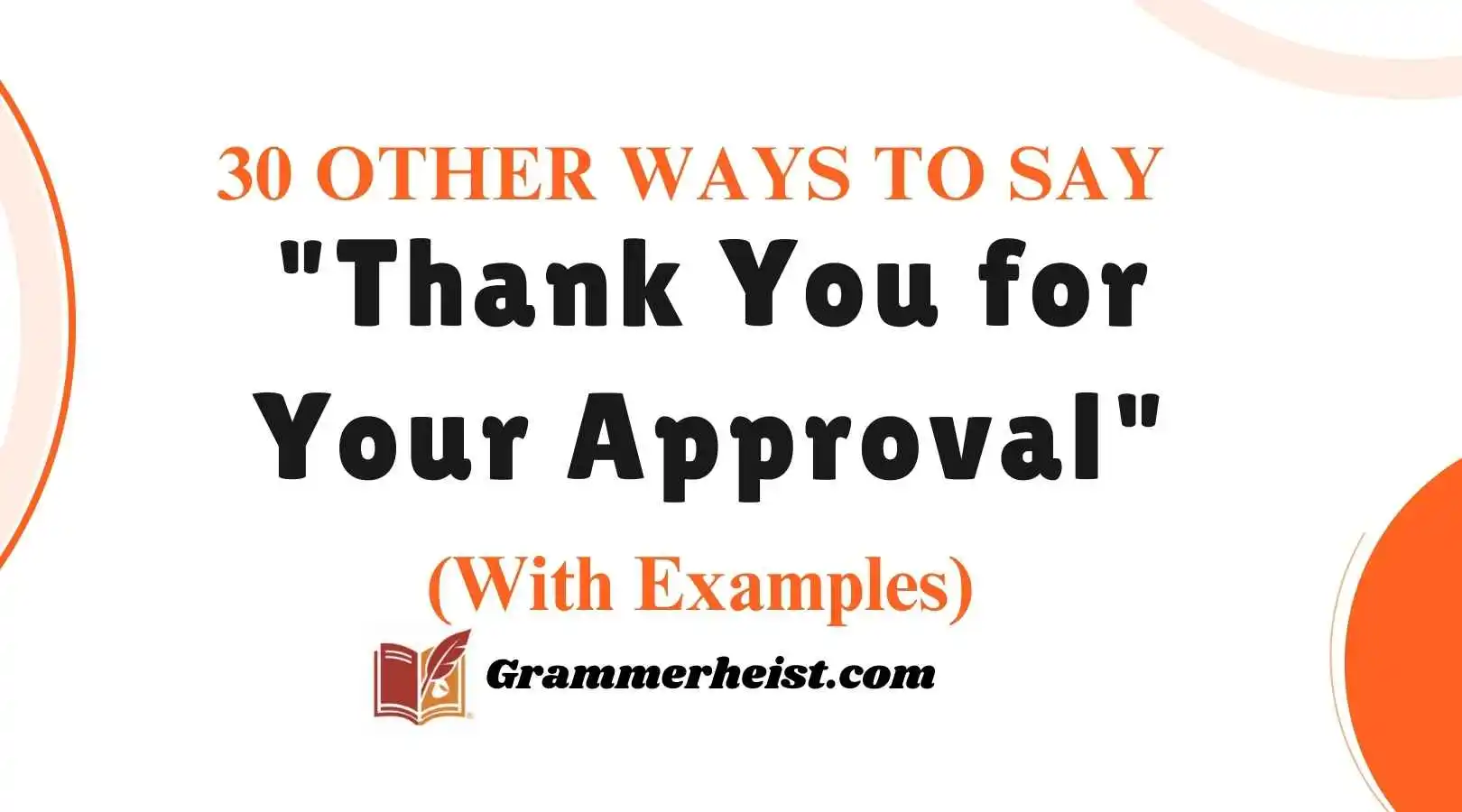Finding the right words to convey your thoughts is essential, especially when you want to reach out with warmth and consideration. Sometimes, the phrase “I just wanted to follow up” can feel too formal or distant. By using more thoughtful and engaging alternatives, you can ensure that your message feels personal, professional, and meaningful.
Here, we’ll explore 30 alternatives to “I just wanted to follow up,” designed to resonate with your readers and show that you genuinely care about connecting.
What Does “Follow Up” Mean?
Understanding the true meaning of “follow up” can help you choose the right words and make your messages more impactful. At its core, “follow up” means reaching out again to get additional information, to remind someone about a matter, or to simply check in on the progress or outcome of a previous conversation. It shows responsibility, interest, and professionalism in communication.
Is It Professional/Polite to Say “I Just Wanted to Follow Up”?
Yes, it is generally professional and polite to say “I just wanted to follow up.” However, if you’re seeking a more personalized touch, especially when aiming to build rapport, alternatives can help. Using different phrases to follow up can soften your approach, making your communication feel thoughtful and empathetic.
Advantages and Disadvantages of Saying “I Just Wanted to Follow Up”
Advantages:
- Simple and clear; gets the point across effectively.
- Commonly understood in professional settings.
Disadvantages:
- Can come across as impersonal or repetitive.
- May feel too formal or blunt for certain contexts.
Synonyms for “I Just Wanted to Follow Up”
- I Hope You’re Doing Well! Just Checking In
- I Wanted to See If You Had Any Updates
- Just Touching Base to Stay Connected
- I Thought I’d Reach Out to See Where Things Stand
- I’m Just Making Sure This Didn’t Slip Through the Cracks
- Following Up to Keep Things Moving Along
- Just Circling Back on This
- I’m Here to Support – Any Updates?
- Checking In to See If There’s Anything Else I Can Help With
- I Wanted to Revisit Our Conversation
- Hope You’re Doing Well – Wanted to Follow Up on This
- I Just Wanted to Make Sure Everything’s on Track
- Have You Had a Chance to Look Into This?
- I’m Here if You Need Anything Further
- I Thought I’d Touch Base Again
- Just a Friendly Reminder
- How Are Things Going on Your End?
- Is There Anything Further I Can Provide?
- Reaching Out to Keep Our Conversation Fresh
- I’m Here to Keep Things Flowing Smoothly
- Just Checking In – Any Questions on This?
- Wanted to Circle Back on This Discussion
- Simply Following Up as Planned
- I’m Eager to Hear Where Things Are
- Following Up as Promised
- Have You Had Time to Consider?
- I Wanted to Keep in Touch
- Just Thought I’d Send a Quick Check-In
- I’m Available for Any Further Discussion
- Looking Forward to Hearing Back from You Soon
1. I Hope You’re Doing Well! Just Checking In
Meaning: This phrase combines a friendly check-in with a subtle follow-up.
Definition: A way of re-engaging in a warm, caring manner.
Explanation: This alternative softens your message, focusing first on the recipient’s well-being.
Example: “I hope you’re doing well! Just checking in to see if there’s been any progress on the proposal.”
Best Use: When a more casual, friendly approach is suitable.
Tone: Warm and supportive.
2. I Wanted to See If You Had Any Updates
Meaning: Directly asks for updates but remains polite.
Definition: An inquiry for any new information or status updates.
Explanation: By expressing a genuine interest in updates, this approach can feel more engaging than a simple follow-up.
Example: “I wanted to see if you had any updates regarding our last discussion on the project timeline.”
Best Use: Suitable for a professional setting where updates are required.
Tone: Professional and polite.
3. Just Touching Base to Stay Connected
Meaning: Indicates you’re maintaining open communication without pressure.
Definition: A gentle way of checking in to keep communication lines open.
Explanation: This approach signals that you’re interested in maintaining a connection while respecting the recipient’s time.
Example: “Just touching base to stay connected – let me know if there’s anything you need from my end.”
Best Use: Ideal for ongoing collaborations or relationships.
Tone: Friendly and informal.
4. I Thought I’d Reach Out to See Where Things Stand
Meaning: Checking in to understand the current status.
Definition: A polite way of asking if any progress has been made.
Explanation: This phrase shows that you’re interested in an update without making any assumptions.
Example: “I thought I’d reach out to see where things stand on the project launch timeline.”
Best Use: When you want a casual but professional check-in.
Tone: Neutral and respectful.
5. I’m Just Making Sure This Didn’t Slip Through the Cracks
Meaning: A gentle reminder to ensure the task hasn’t been forgotten.
Definition: This approach suggests a caring nudge.
Explanation: By highlighting the potential of it “slipping through the cracks,” this wording shows empathy for a busy schedule.
Example: “I’m just making sure this didn’t slip through the cracks – do you need any additional information?”
Best Use: For situations where you’re following up on a pending item.
Tone: Empathetic and understanding.
6. Following Up to Keep Things Moving Along
Meaning: A subtle reminder to encourage progress.
Definition: This is a direct but courteous way to keep things on track.
Explanation: It shows a commitment to advancing the project or task, conveying reliability.
Example: “Following up to keep things moving along with the upcoming meeting prep.”
Best Use: For collaborative projects that require regular updates.
Tone: Encouraging and supportive.
7. Just Circling Back on This
Meaning: A friendly check-in on a pending matter.
Definition: Used as a non-intrusive way to revisit a topic.
Explanation: “Circling back” feels casual and non-urgent, which can be refreshing in business settings.
Example: “Just circling back on this to see if there’s any update regarding the vendor approval.”
Best Use: When you want to follow up without imposing.
Tone: Friendly and low-pressure.
8. I’m Here to Support – Any Updates?
Meaning: Offering assistance while seeking updates.
Definition: This phrase combines checking in with a willingness to help.
Explanation: It’s useful for showing that you’re available for support and not just asking for a status report.
Example: “I’m here to support – any updates on how I can assist with the next steps?”
Best Use: When you’re willing to contribute further if needed.
Tone: Helpful and considerate.
9. Checking In to See If There’s Anything Else I Can Help With
Meaning: Offering additional assistance while following up.
Definition: Shows that you’re ready to contribute more if required.
Explanation: This is a polite, open-ended way to check in that encourages dialogue.
Example: “Just checking in to see if there’s anything else I can help with before we move forward.”
Best Use: For maintaining an open and collaborative line of communication.
Tone: Helpful and open-minded.
10. I Wanted to Revisit Our Conversation
Meaning: Revisiting an earlier discussion to follow up.
Definition: This phrase is subtle and allows for an informal catch-up.
Explanation: By using “revisit,” it implies that the topic was previously discussed and worth checking on again.
Example: “I wanted to revisit our conversation about the timeline adjustments – any updates on that?”
Best Use: When you want to remind someone of a previous chat without being pushy.
Tone: Gentle and professional.
11. Hope You’re Doing Well – Wanted to Follow Up on This
Meaning: A gentle way of checking in while wishing the recipient well.
Definition: This phrase opens with a thoughtful greeting, adding warmth before requesting an update.
Explanation: By expressing hope for the recipient’s well-being first, this phrase softens the follow-up and shows care.
Example: “Hope you’re doing well – wanted to follow up on this proposal’s status.”
Best Use: When reaching out to someone you haven’t spoken to in a while.
Tone: Warm and friendly.
12. I Just Wanted to Make Sure Everything’s on Track
Meaning: A friendly check-in to ensure progress is steady.
Definition: This phrase conveys that you’re checking on the status without rushing.
Explanation: It shows that you’re invested in the project and want to make sure things are moving as planned.
Example: “I just wanted to make sure everything’s on track for the project’s next milestone.”
Best Use: Useful for projects that require steady updates.
Tone: Encouraging and positive.
13. Have You Had a Chance to Look Into This?
Meaning: A polite inquiry to see if the recipient has reviewed a previous item.
Definition: This phrase implies no pressure, just a friendly reminder.
Explanation: It lets the recipient know you’re interested in their progress but understand if they haven’t had time.
Example: “Have you had a chance to look into the budget proposal?”
Best Use: When following up on something requiring review.
Tone: Understanding and low-pressure.
14. I’m Here if You Need Anything Further
Meaning: Offering your availability and willingness to help.
Definition: This phrase is reassuring, letting the recipient know you’re available for support.
Explanation: By offering help rather than directly asking for a status, this shows patience and support.
Example: “I’m here if you need anything further regarding the presentation details.”
Best Use: When you want to keep communication open without pressuring.
Tone: Supportive and reassuring.
15. I Thought I’d Touch Base Again
Meaning: A casual follow-up with a friendly tone.
Definition: This phrase is often used for a light, conversational follow-up.
Explanation: It suggests you’re keeping in touch without creating urgency.
Example: “I thought I’d touch base again to see if there’s any update on the project.”
Best Use: Ideal for a casual follow-up.
Tone: Friendly and informal.
16. Just a Friendly Reminder
Meaning: A gentle reminder for a previous request.
Definition: It’s a kind way of prompting the recipient about an upcoming or pending item.
Explanation: This phrase is direct yet softened by the word “friendly,” keeping it polite.
Example: “Just a friendly reminder about the upcoming meeting on Tuesday.”
Best Use: To remind someone of a deadline or scheduled event.
Tone: Gentle and courteous.
17. How Are Things Going on Your End?
Meaning: Checking in while inviting them to share their perspective.
Definition: It’s an open-ended way to inquire about their progress or experience.
Explanation: This phrase shows interest in their side of the task or project, creating a collaborative atmosphere.
Example: “How are things going on your end with the project launch?”
Best Use: When you’re genuinely interested in their progress or experience.
Tone: Engaging and collaborative.
18. Is There Anything Further I Can Provide?
Meaning: Offering additional support while checking in.
Definition: This phrase shows a willingness to offer more resources or assistance.
Explanation: By asking if they need more, you’re signaling flexibility and readiness to help.
Example: “Is there anything further I can provide to help with your decision-making process?”
Best Use: For situations that may require extra information or resources.
Tone: Helpful and receptive.
19. Reaching Out to Keep Our Conversation Fresh
Meaning: Following up to keep the communication current.
Definition: This phrase implies a light reminder to maintain momentum.
Explanation: It indicates that you value the conversation and want to keep it top of mind.
Example: “I’m reaching out to keep our conversation fresh regarding the partnership proposal.”
Best Use: When you want to maintain engagement without being demanding.
Tone: Light and friendly.
20. I’m Here to Keep Things Flowing Smoothly
Meaning: Checking in with the intention of maintaining progress.
Definition: This phrase is supportive, focusing on a smooth workflow.
Explanation: It shows you’re checking in to ensure nothing is stalled without implying blame.
Example: “I’m here to keep things flowing smoothly – let me know if there’s anything you need from my end.”
Best Use: For projects where continuous progress is vital.
Tone: Encouraging and supportive.
21. Just Checking In – Any Questions on This?
Meaning: A follow-up that invites questions, showing you’re available to help.
Definition: This phrase combines a gentle check-in with an offer to address any uncertainties.
Explanation: It conveys that you’re open to answering questions, keeping the communication channel supportive and open.
Example: “Just checking in – any questions on this proposal that I can help with?”
Best Use: Ideal for collaborative projects or when more clarification might be needed.
Tone: Inviting and approachable.
22. Wanted to Circle Back on This Discussion
Meaning: Revisiting a past conversation to keep it active.
Definition: This phrase is a polite nudge to return to an important topic.
Explanation: It suggests the conversation is important to you and that you’d like to keep it progressing.
Example: “Wanted to circle back on this discussion regarding our partnership terms.”
Best Use: For follow-ups on ongoing discussions or when further decisions are required.
Tone: Professional and engaged.
23. Simply Following Up as Planned
Meaning: A straightforward follow-up that refers to a previously scheduled check-in.
Definition: It implies you’re keeping to an agreed timeline without pressing for a response.
Explanation: This approach maintains a casual tone while demonstrating respect for prior agreements.
Example: “Simply following up as planned on our discussion about the new project.”
Best Use: When the follow-up was anticipated or discussed earlier.
Tone: Respectful and predictable.
24. I’m Eager to Hear Where Things Are
Meaning: Expresses anticipation for an update, showing interest in the outcome.
Definition: This phrase conveys that you’re looking forward to hearing about the progress.
Explanation: It reflects genuine enthusiasm and curiosity without being too pushy.
Example: “I’m eager to hear where things are with the team’s preparations.”
Best Use: For projects or tasks where excitement and positive anticipation are appropriate.
Tone: Positive and enthusiastic.
25. Following Up as Promised
Meaning: A reminder that you’re reaching out based on a previous commitment.
Definition: This phrase reassures the recipient that the follow-up is consistent with what was agreed.
Explanation: It subtly highlights reliability, showing that you keep your word.
Example: “Following up as promised on our last discussion.”
Best Use: When you want to reaffirm your reliability and commitment to the discussion.
Tone: Trustworthy and consistent.
26. Have You Had Time to Consider?
Meaning: A polite nudge to check if the recipient has reviewed something.
Definition: This phrase respects the recipient’s time, acknowledging that they may not have reviewed it yet.
Explanation: It conveys understanding and patience, emphasizing that you value their input.
Example: “Have you had time to consider the proposal for next quarter’s budget?”
Best Use: For situations where a decision is pending, but you don’t want to rush it.
Tone: Respectful and considerate.
27. I Wanted to Keep in Touch
Meaning: A friendly way to follow up without urgency.
Definition: It’s an informal approach to keeping communication ongoing.
Explanation: It implies that you value the connection and want to maintain an open line of communication.
Example: “I wanted to keep in touch regarding our potential collaboration.”
Best Use: When you want to maintain rapport without directly seeking an answer.
Tone: Warm and relational.
28. Just Thought I’d Send a Quick Check-In
Meaning: A light, non-urgent follow-up for gentle reminders.
Definition: This phrase is casual and laid-back, reducing any pressure on the recipient.
Explanation: It’s suitable for a friendly follow-up, showing you’re checking in without demanding immediate feedback.
Example: “Just thought I’d send a quick check-in on the progress of our team project.”
Best Use: When a relaxed, low-key approach is appropriate.
Tone: Friendly and informal.
29. I’m Available for Any Further Discussion
Meaning: A polite offer to discuss or provide additional support.
Definition: This phrase implies openness to continue the conversation or provide clarity.
Explanation: It reassures the recipient that you’re willing to address any questions, making the conversation feel approachable.
Example: “I’m available for any further discussion on the final budget report.”
Best Use: When the recipient may need extra assistance or a deeper discussion.
Tone: Supportive and flexible.
30. Looking Forward to Hearing Back from You Soon
Meaning: Expresses hope to receive a reply soon, showing anticipation.
Definition: This phrase signals that you’re interested in their response without rushing.
Explanation: It’s a polite way of closing the follow-up with a slight nudge for a timely reply.
Example: “Looking forward to hearing back from you soon regarding the timeline.”
Best Use: When you’re seeking a prompt response but want to keep it courteous.
Tone: Polite and encouraging.
Conclusion
Choosing words thoughtfully when following up can make a world of difference. These 30 alternatives provide a range of tones, from friendly to formal, allowing you to find the right expression for each unique situation. Whether you’re checking in casually or following up formally, these phrases help build respectful and positive professional relationships.

Lexy Summer is a talented writer with a deep passion for the art of language and storytelling. With a background in editing and content creation, Lexy has honed her skills in crafting clear, engaging, and grammatically flawless writing.



